Contents
- Crop Cultivation
- Agricultural Communities
- Women’s Role in Agriculture
- Festivals or Rituals Related to Farming
- Pola Festival
- Sitai
- Traditional Agricultural Practices
- Cotton Cultivation
- Use of Technology
- Farm Mechanization
- Institutional Infrastructure
- Chandrapur District Farmers' Co. Limited
- The Maharashtra State Cooperative Cotton Producers Marketing Federation Limited
- Chandrapur District Milk Producers Cooperative Union Limited
- Awareness about Schemes
- Market Structure: APMC
- List of APMC markets(as of September 2024)
- Farmers Issues
- Recurring Environmental Disasters and Agricultural Challenges
- Graphs
- Irrigation
- A. No. of Projects
- B. No. of Ponds/Vilage Lakes and Storage Dams
- C. Irrigation Beneficiary Area vs Irrigated Area
- D. Share of Beneficiary Area Irrigated
- E. Tubewells and Pumps Installed In The Year
- F. Irrigation and Water Pumping Facilities
- Cropping Metrics
- A. Share in Total Holdings
- B. Cultivated Area (With Components)
- C. Gross Cropped Area (Irrigated + Unirrigated)
- D. Share of Cropped Area Irrigated
- E. Distribution of Chemical Fertilizers
- Land Use and Credit
- A. Area of Agricultural Land Holdings (With Size Group)
- B. Size Groups' Share in Total Agricultural Land Holdings Area
- C. No. of Agricultural Land Holdings (With Size Group)
- D. Size Groups' Share in Total No. of Agricultural Land Holdings
- E. Agricultural Lending
- F. Agricultural Credit as a share of Total Credit
- Sources
CHANDRAPUR
Agriculture
Last updated on 6 November 2025. Help us improve the information on this page by clicking on suggest edits or writing to us.
Chandrapur district is located in the drought-prone Vidarbha region of Maharashtra, in the Western Plateau and Hills Region. Known for its rich black soil, typical of the Deccan Plateau, the district’s economy is primarily agricultural. The region's agriculture primarily focuses on crops such as Paddy, Cotton, and Soybeans, though challenges like fragmented landholdings, labor shortages, and limited awareness of government schemes affect productivity. While most farming relies heavily on inorganic fertilizers, efforts are being made to promote organic practices through local vermicompost production. The government, along with institutions like NABARD, actively supports farmers through various schemes focused on irrigation, financial aid, and digital innovations. However, raising awareness and improving access to these initiatives remain critical for ensuring sustainable agricultural development in the region.
Crop Cultivation
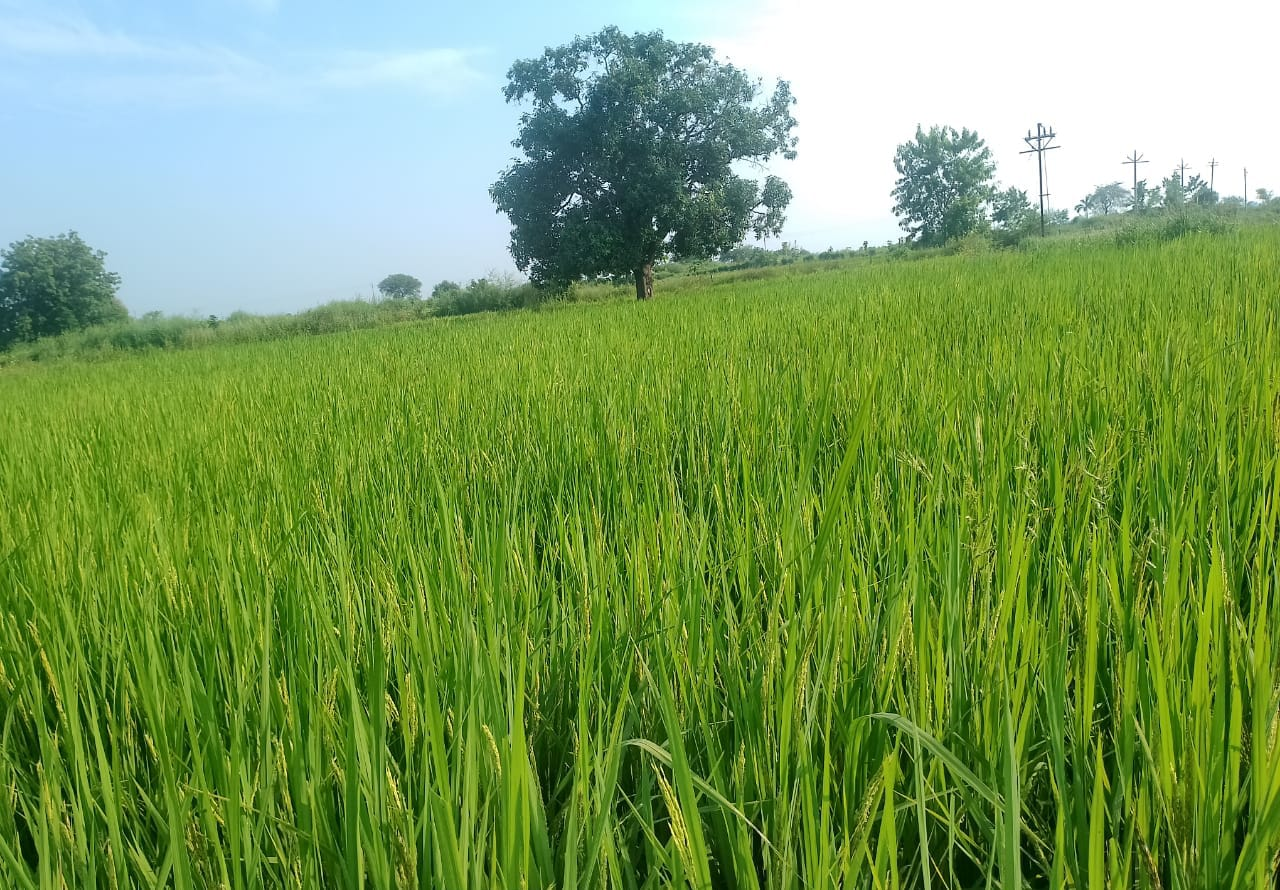
The district of Chandrapur lies entirely in the Eastern Plateau (Chhota Nagpur) and Eastern Ghats region. The climate is generally hot and sub-humid, and the area features a variety of soil types, including deep black soil, medium deep black soil, and shallow black soil. The district is also known for its rich coal deposits, which contribute to its industrial significance.

Several rivers flow through the district, including the Wainganga, Wardha, Erai, Zarpat, and Painganga, supporting both agriculture and ecological diversity. The agro-climatic conditions are favourable for the cultivation of oilseeds, cereals, cotton, pulses, paddy, and soybean. In addition, the region supports a variety of horticultural crops such as chilli, turmeric, brinjal, tomato, onion, cauliflower, cabbage, and radish, as well as fruits like sapota (chickoo), custard apple, ber, amla, and jamun.
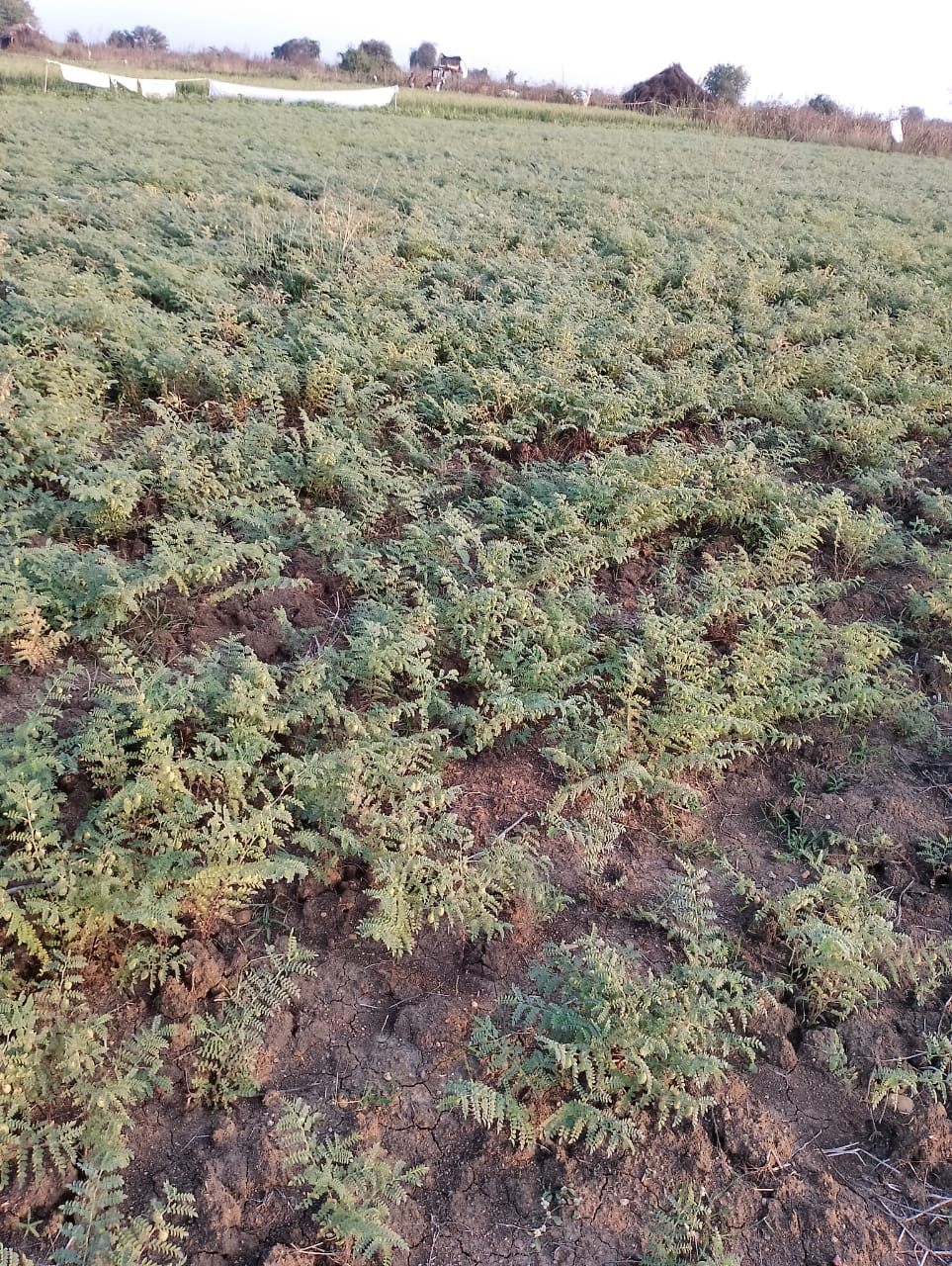
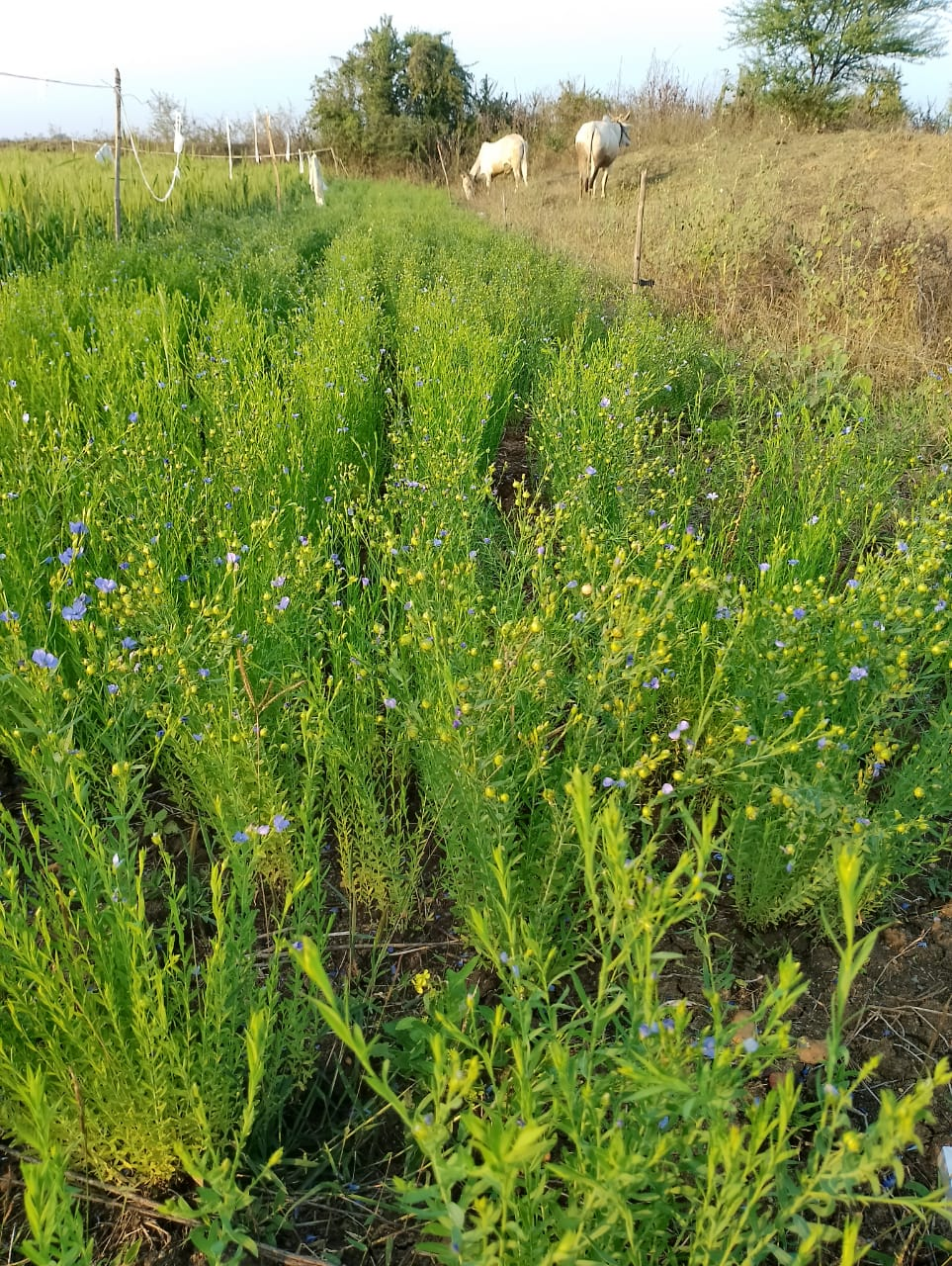
Agricultural Communities
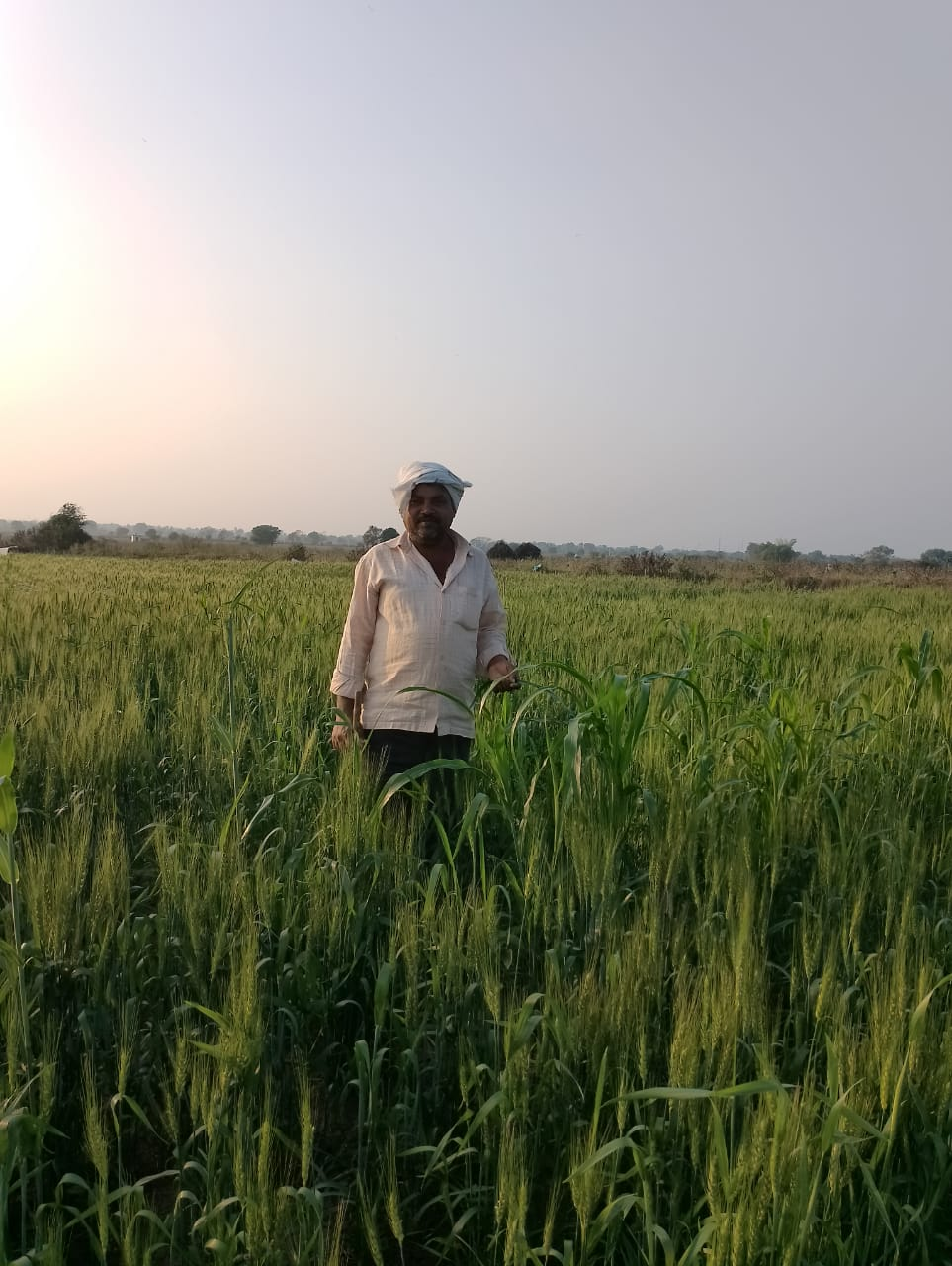
The Chandrapur District Gazetteer (1972) records several communities historically and culturally linked to agriculture in the region. Among these, the Kunbis form the most prominent group. There are many sub-communities of this group, several of whom are involved in farming. The Dhanoje Kunbis are regarded as the most prosperous and are noted for cultivating crops like jowar and oilseeds, as well as for maintaining high-quality cattle. The Khaire Kunbis, likely named after ancestors involved in the production of kat (catechu), are primarily located in the northern parts of the Wainganga valley. They are known for cultivating rice and jowar, building durable water tanks, and exhibiting notable agricultural skills.
The Marars or Malis are traditionally horticulturists who maintain small, irrigated garden plots, often drawing water from wells dug in streambeds. They supply a diverse array of vegetables and spices to the region. Most Malis belong to the Kosri or Kosaria subdivision, a name that possibly references the ancient kingdom of Kosala, of which Chandrapur was once a part. Other sub-groups are classified by the crops they grow—for example, the Phulmalis (flower growers), the Jarya (cultivators of garlic, brinjal, and bhang), and the Hardya and Ghase, who are known for turmeric cultivation.
The Mahars, traditionally considered a service caste, largely work as agricultural labourers, though some have transitioned into small-scale farming.
Kapewars and Velamas are Telugu-speaking communities engaged in cultivation. The Kapewars are agriculturists similar to the Kunbis and are also known for their masonry skills; they are believed to have contributed to the construction of the historic walls of Chandrapur before shifting to farming.
The Madia Gonds typically inhabit forested and remote regions near shallow streams. These communities practice subsistence agriculture, cultivating crops such as jowari, bajri, tur, udid, groundnut, soybean, and a variety of vegetables, supplemented by forest resources.
The Pardhans, historically associated with providing services to villages where the Gonds resided, were also noted to have transitioned to farming over the years. They cultivate maize, pulses, oilseeds, and vegetables. The Kolis were renowned for their skill in tank-building and irrigation. They play a key role in the region’s agricultural infrastructure and are major producers of rice, sugarcane, and gur (jaggery).
Women’s Role in Agriculture
In Chandrapur, women play a significant role in the agricultural sector, often contributing more visibly than men. However, their involvement is largely as agricultural laborers, engaging in traditional farming practices with limited access to advanced tools or technologies. Many men, especially those with multiple jobs, rely on their wives or other female family members to work on the farms, generating additional income for the household. Women belonging to indigenous communities are particularly active in agricultural activities, playing a key role in sustaining the farming economy of the region.
Festivals or Rituals Related to Farming
In rural areas, particularly among farmers with larger landholdings, it is customary to hire a farmhand known as a Gadhi. This worker, often employed on Gudi Padwa, expresses a desire to work for a single farmer throughout the year. His annual income ranges between ₹80,000 to ₹1,00,000 during the years 2022 to 2024.
As the agricultural season begins, new farming tools are crafted, and a special ritual called Sajuni/Saduni is performed to bless them. This ceremony is considered equivalent to Bhumi Poojan (a traditional land-worship ritual). Another ritual, known as Sitai, is conducted at the start of cotton picking to seek blessings for a fruitful harvest.
During paddy planting, farmers prepare five bundles of paddy stalks, known as Judga, which are worshiped with incense. These bundles are then preserved in honey within the nursery as a symbolic gesture of protection. Once the paddy crop ripens, a portion of the grain, called Lomb, is offered at the local Bhagwan Hanuman Mandir before the full-scale harvest begins.
Pola Festival
In the Chandrapur district, Pola is a prominent festival that celebrates bulls, who play a vital role in farming. On this day, the bulls are given a ceremonial bath, beautifully decorated, and adorned with Chavares (traditional garments for bulls). These gestures reflect the farmers' gratitude toward their bulls for their hard work and partnership throughout the year.
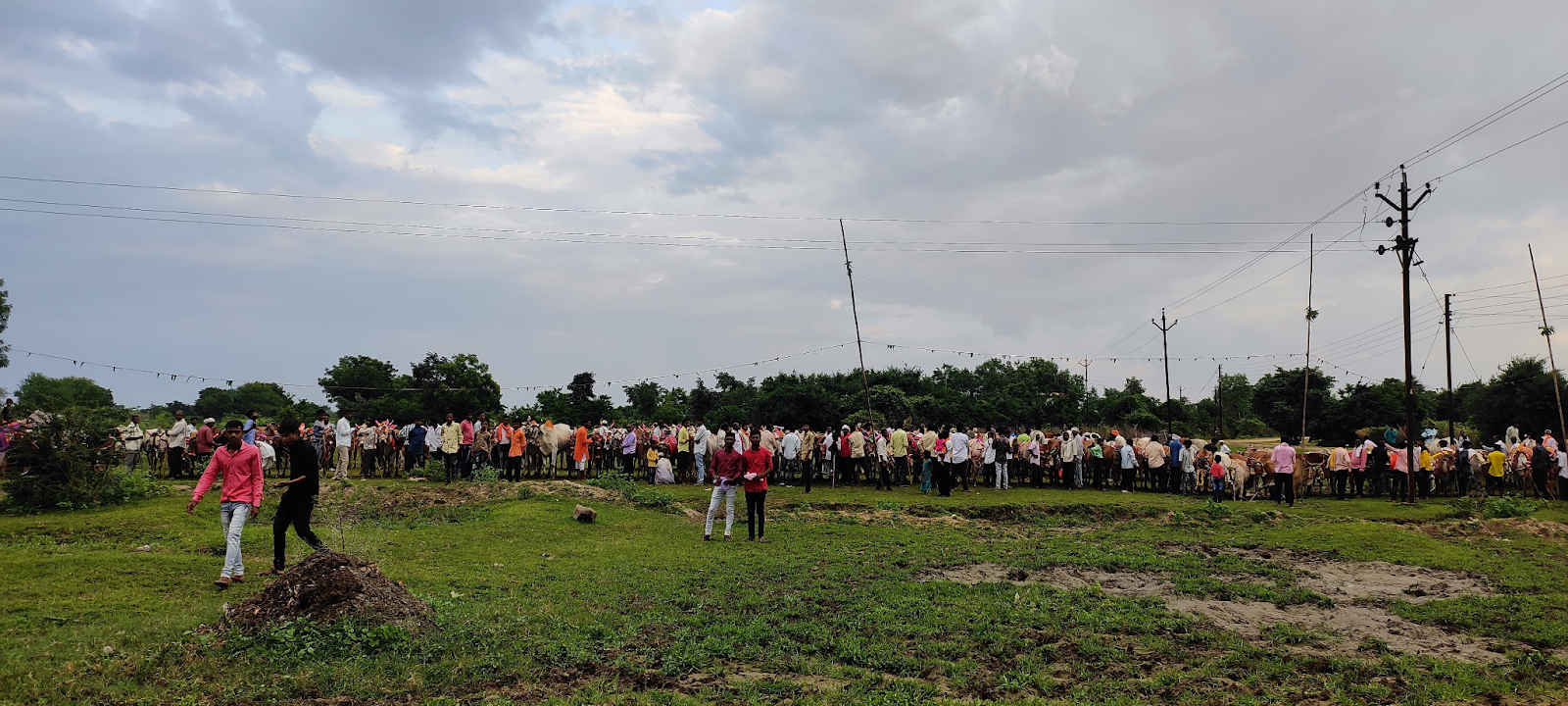
As part of the Pola festival celebrations, the bulls' necks are adorned with garlands, tolas (decorative threads), bells, and other ornaments. When leading the bulls to the hive (enclosure or resting area), a horizontal rope is tied across the entrance, and a central stick is placed on one side of the door. This symbolizes tradition and ensures the bulls enter the space ceremonially. Once the preparations are complete, the bulls are guided to the area where they will be fed and cared for.
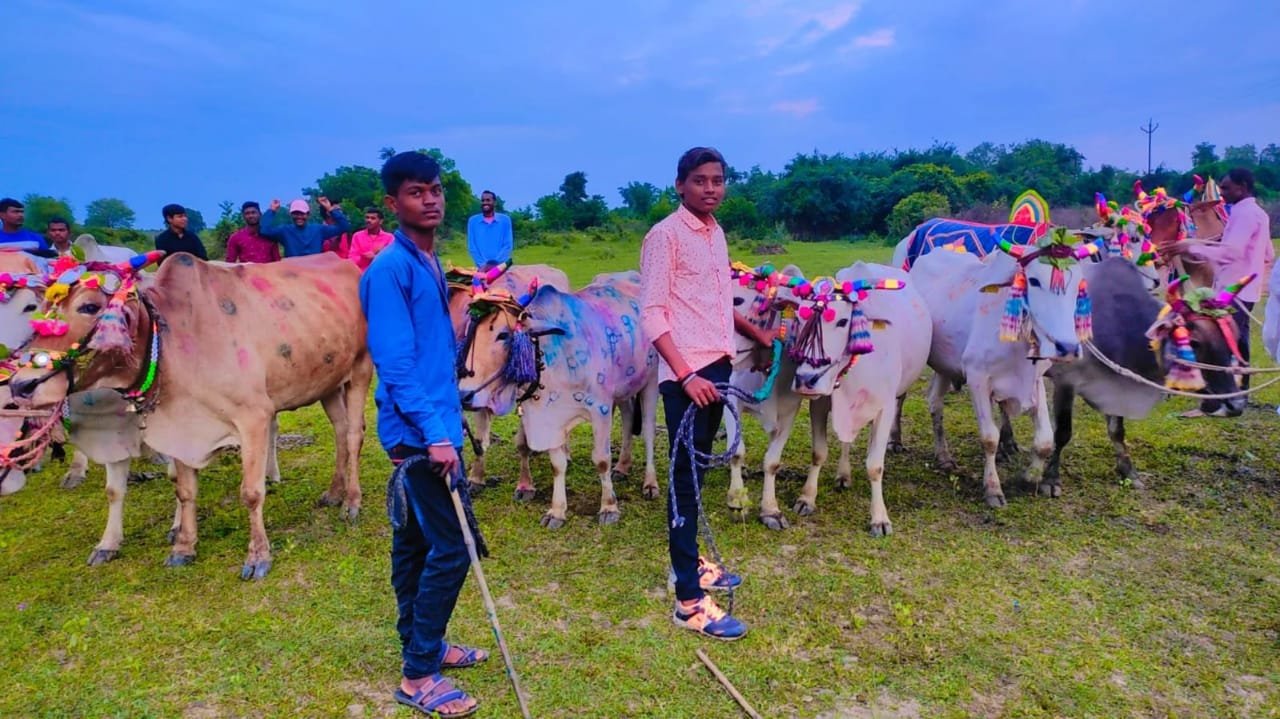
At the hive (enclosure), a pylon of mango leaves is erected as part of the Pola festival rituals. On this special day, an elder from the village brings Gudhi—strings of yarn—which are ceremonially rolled out in front of the bulls. Once this ritual is completed, the enclosure is opened, and the farmer takes his pair of bulls back home.
At home, the farmer and his wife worship the bulls as a gesture of gratitude. They offer them Puranpoli (a traditional sweet flatbread) and feed them with love and care.
Sitai
Cotton picking starts after the festival of Diwali. Before the picking begins, a puja is performed, which is known as 'Sitai'. The figure that is portrayed in this puja is called Sitai and is made by tying a cradle to two cotton trees (Parhati) and wrapping the flower (cotton) of the tree in a new cloth. After worshiping it, curd rice is sprinkled here and there, and sesame and sugar (Til-Gul) are distributed as prasad. People believe that this would increase the crop yield.
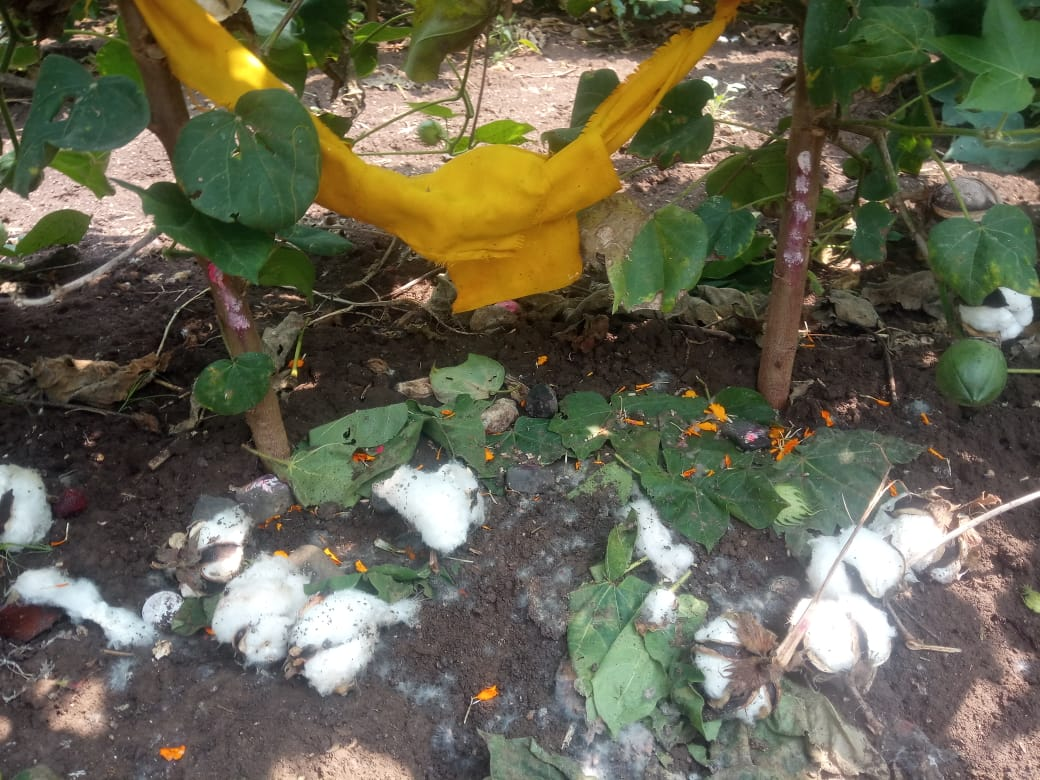
Traditional Agricultural Practices
Cotton Cultivation
Cotton is a major crop in Chandrapur, and the cultivation starts as soon as the monsoon clouds are seen on the horizon. Sowing of the cotton seeds is locally known as sarki. The method of planting cotton seeds varies from region to region. In Chandrapur, a pit that is 2-3 inches deep is made in the central part of the furrow for the seed to be sown. In addition, a chemical fertilizer or cow dung (traditionally) is put in the field along with the seed while sowing.
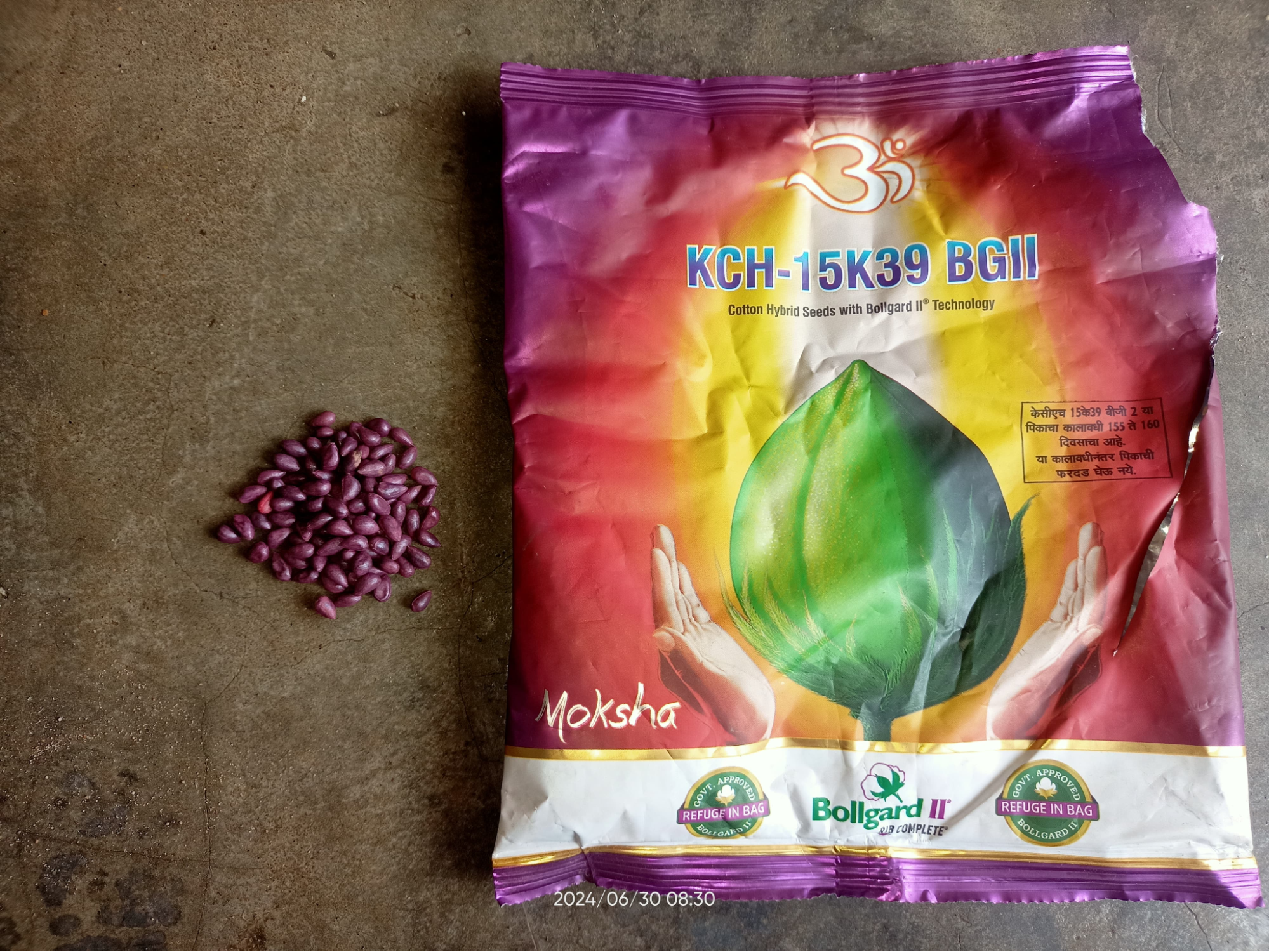
Use of Technology
Farm Mechanization
The use of agricultural machinery has increased in Chandrapur in response to changing labor availability and cost structures. Equipment is employed for various tasks, including tillage, sowing, irrigation, plant protection, and threshing. Locals say that to support small and marginal farmers, who often cannot afford their own machinery, custom hiring services are available in parts of the district. These services allow temporary access to tools required for different stages of crop production.
However, several factors limit widespread adoption. The fragmentation of land into small holdings makes it difficult to use large-scale machinery, and uneven terrain in some areas requires adapted equipment. Affordability remains a constraint, as even rental services can be costly relative to farm income. These limitations contribute to uneven mechanization across the district.
In Gondpimpri and nearby areas, farmers have developed local adaptations such as the use of saline bottles for slow-drip irrigation, a method suited to water-scarce conditions. Similar practices have been observed in Rajura, Bhadravati, and Chanakha, where farmers are experimenting with low-cost techniques to address resource constraints.
Institutional Infrastructure
The district's infrastructure often appears inadequate in certain areas. According to the 2023-24 NABARD’s PLP report, there is a significant shortage of cold storage facilities, soil testing labs, pucca (paved) roads, and agro-processing units. The district has 9 Agricultural Produce Market Committees (APMCs), 251 godowns, 0 cold storage facilities, 2 soil testing centers, 5 plantation nurseries, 74 farmers' clubs, and approximately 2,800 fertilizer, seed, and pesticide outlets. Additionally, there is one Krishi Vigyan Kendra (KVK) supporting agricultural extension services in the region.
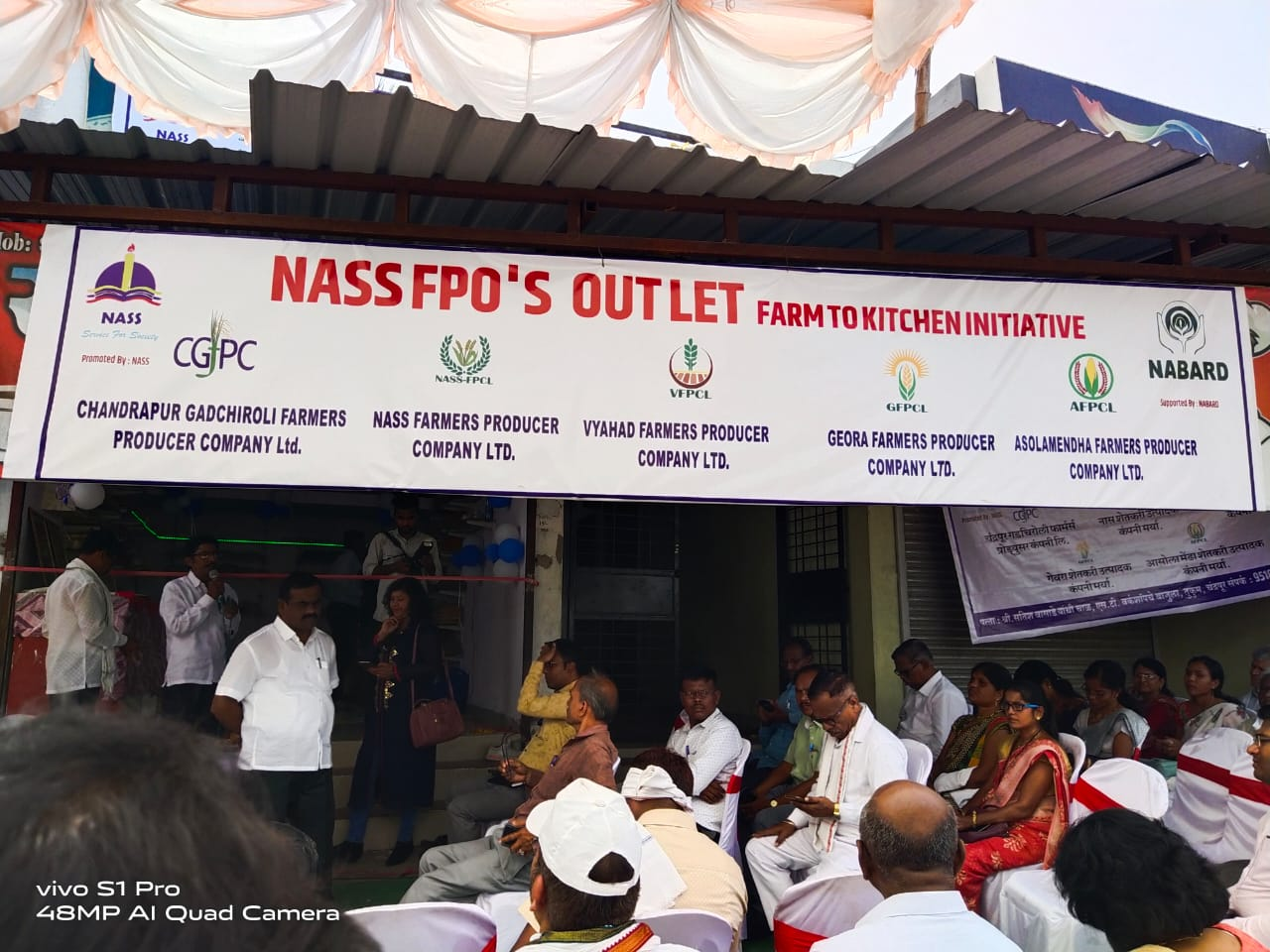
NABARD plays a crucial role in promoting digital and technological innovations in farming. It supports programs such as the delineation and geo-tagging of watersheds to enhance water management, and agro-weather advisories to help farmers plan their activities better. NABARD has also introduced the Agriculture Produce Preservation Lifecycle Enhancement System (APPLE) to minimize post-harvest crop losses. Furthermore, the organization monitors Tribal Development Fund (TDF) projects to ensure sustainable agricultural progress.
Together, these initiatives by the central and state governments, along with NABARD’s support, aim to enhance agricultural productivity and improve the livelihoods of farmers in Chandrapur. By fostering innovation, expanding irrigation coverage, and ensuring access to financial resources, these programs seek to create sustainable growth in the agricultural sector.
Chandrapur District Farmers' Co. Limited
Chandrapur District Farmers' Co. Limited is a Farmer Producer Organization (FPO) established in Chandrapur district to improve farmers' livelihoods by securing better market access and fair prices for their produce. The FPO engages in a range of agricultural activities, including crop production, animal husbandry, and horticulture. In addition to these, it provides its members with technical assistance, training, and capacity-building programs to enhance their skills and boost agricultural productivity.
The Maharashtra State Cooperative Cotton Producers Marketing Federation Limited
The Maharashtra State Cooperative Cotton Producers Marketing Federation Limited is a cooperative society committed to advancing the interests of cotton growers across Maharashtra, including those in the Chandrapur district. It assists farmers with the procurement and marketing of cotton while ensuring they receive fair prices for their produce. The federation also provides quality inputs such as seeds and fertilizers to its members.
Chandrapur District Milk Producers Cooperative Union Limited
Similarly, the Chandrapur District Milk Producers Cooperative Union Limited focuses on dairy farming in the region. It collects milk from local farmers, processes it, and sells it in various markets. The union also offers veterinary services, artificial insemination facilities, and training programs to help members improve their dairy farming practices.
Awareness about Schemes
In Chandrapur, many farmers, particularly from indigenous communities, are not fully aware of the government schemes designed to support agriculture. However, efforts are being made to increase awareness and ensure these programs are accessible. Each taluka in the district has an Agricultural Produce Market Committee (Krishi Utpanna Bazar Samiti) that facilitates the fair trade of crops. To further promote agricultural exports and local products, the government is actively implementing the One District One Product (ODOP) scheme.
Various initiatives are also in place to improve agricultural infrastructure and livelihoods. The Long-Term Irrigation Fund (LTIF) by NABARD provides financial support for completing pending irrigation projects. The Pradhan Mantri Krishi Sinchai Yojana (PMKSY) aims to expand irrigation coverage and promote water-use efficiency. Other central schemes, such as Kisan Bima Yojana, Kisan Samman Nidhi Yojana, Pradhan Mantri Fasal Bima Yojana, and the National Agricultural Development Scheme, are focused on improving the livelihoods of farmers, particularly those from marginalized communities, including Scheduled Castes (SC) and Scheduled Tribes (ST).
At the state level, several initiatives cater to the specific needs of different communities. The Babasaheb Ambedkar Agricultural Self-Reliance Scheme promotes self-reliance among SC farmers by providing financial and technical support. The Irrigation Well Scheme offers financial assistance for the construction of irrigation wells to ensure better water availability for crops. For farmers belonging to the indigenous communities, the Birsa Munda Krishi Kranti Yojana introduces targeted interventions aimed at agricultural development. Additionally, the National Agricultural Development Scheme provides irrigation and other agricultural support, focusing on the upliftment of marginalized communities.
Market Structure: APMC
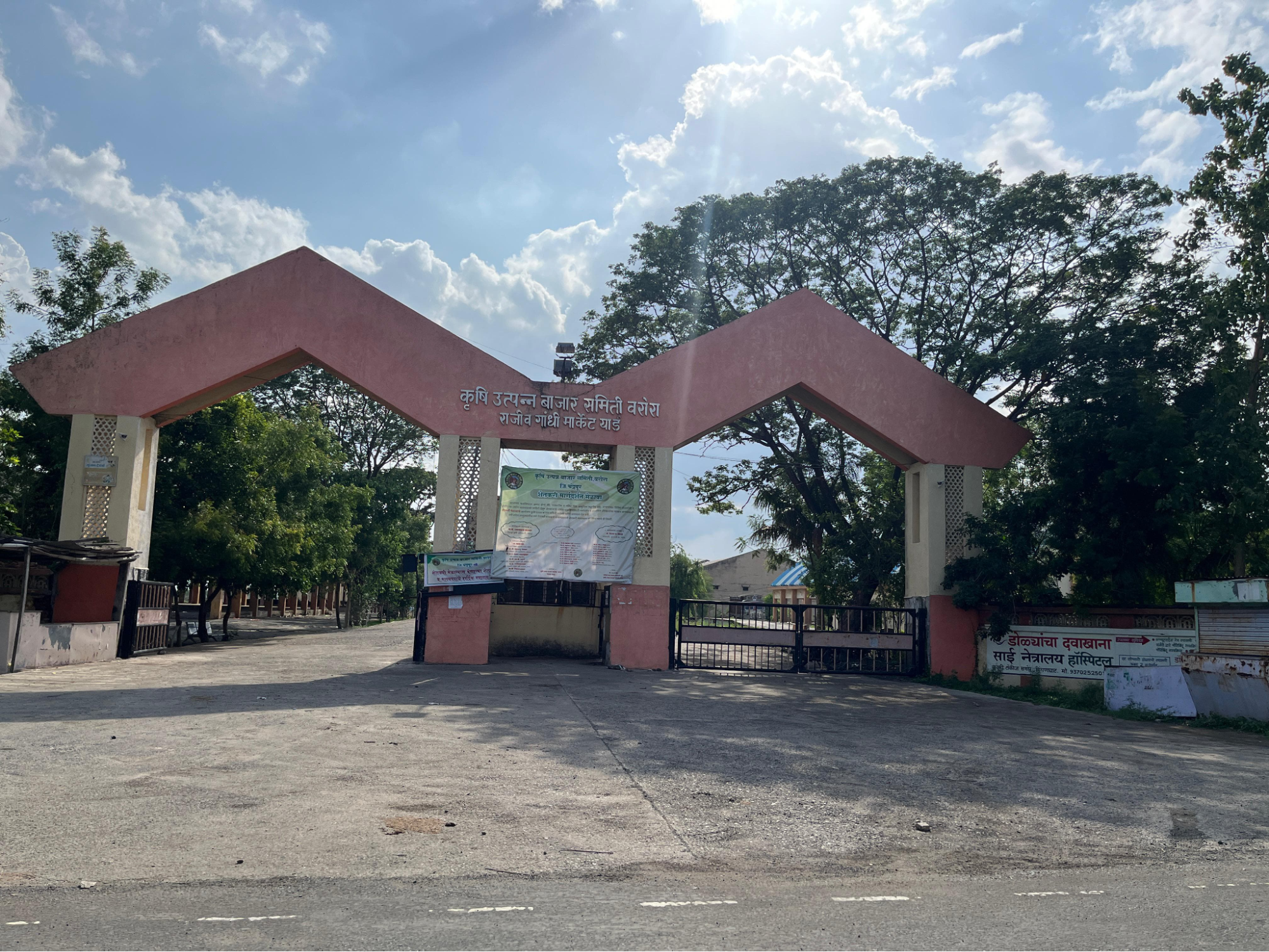
List of APMC markets(as of September 2024)
|
Sr. No |
Name |
Est. Year |
Chairman |
No. of Godowns |
|
1 |
Bhadravati |
1991 |
Bhaskar Tajane |
10 |
|
2 |
Brahmpuri |
1960 |
Prabhakar Selokar |
5 |
|
3 |
Chandrapur |
1960 |
Gangadhar Vithoba Vaidhya |
7 |
|
4 |
Chimur |
1982 |
Mangesh Dhadase |
2 |
|
5 |
Gondpimpri |
1989 |
Indrapal Dhudse |
4 |
|
6 |
Korpana |
2001 |
Ashok Chintaman Bavne |
2 |
|
7 |
Mul |
1960 |
Rakesh Ratnawar |
3 |
|
8 |
Nagbhid |
1960 |
Avesh Pathan |
5 |
|
9 |
Pombhurni |
2009 |
Ravindra Marpalliwar |
3 |
|
10 |
Rajura |
1975 |
Vikas Dewadkar |
5 |
|
11 |
Savali |
1991 |
Hivraj Sheraki |
7 |
|
12 |
Sindevahi |
1962 |
Ramakant Shridharji Lodhe |
5 |
|
13 |
Varora |
1935 |
Dr. Vijay Deotale |
8 |
Farmers Issues
Recurring Environmental Disasters and Agricultural Challenges
Chandrapur is located in a drought-prone region of Maharashtra and has long struggled with extreme weather conditions that make agriculture a highly uncertain endeavor. The district frequently experiences alternating cycles of excessive rainfall leading to floods and prolonged droughts that result in famines or famine-like conditions. Irrigation remains a major challenge for farmers, as water availability declines sharply in the months following the monsoon season. Additionally, farmers face increasing uncertainty regarding crop prices, further worsening their financial instability.
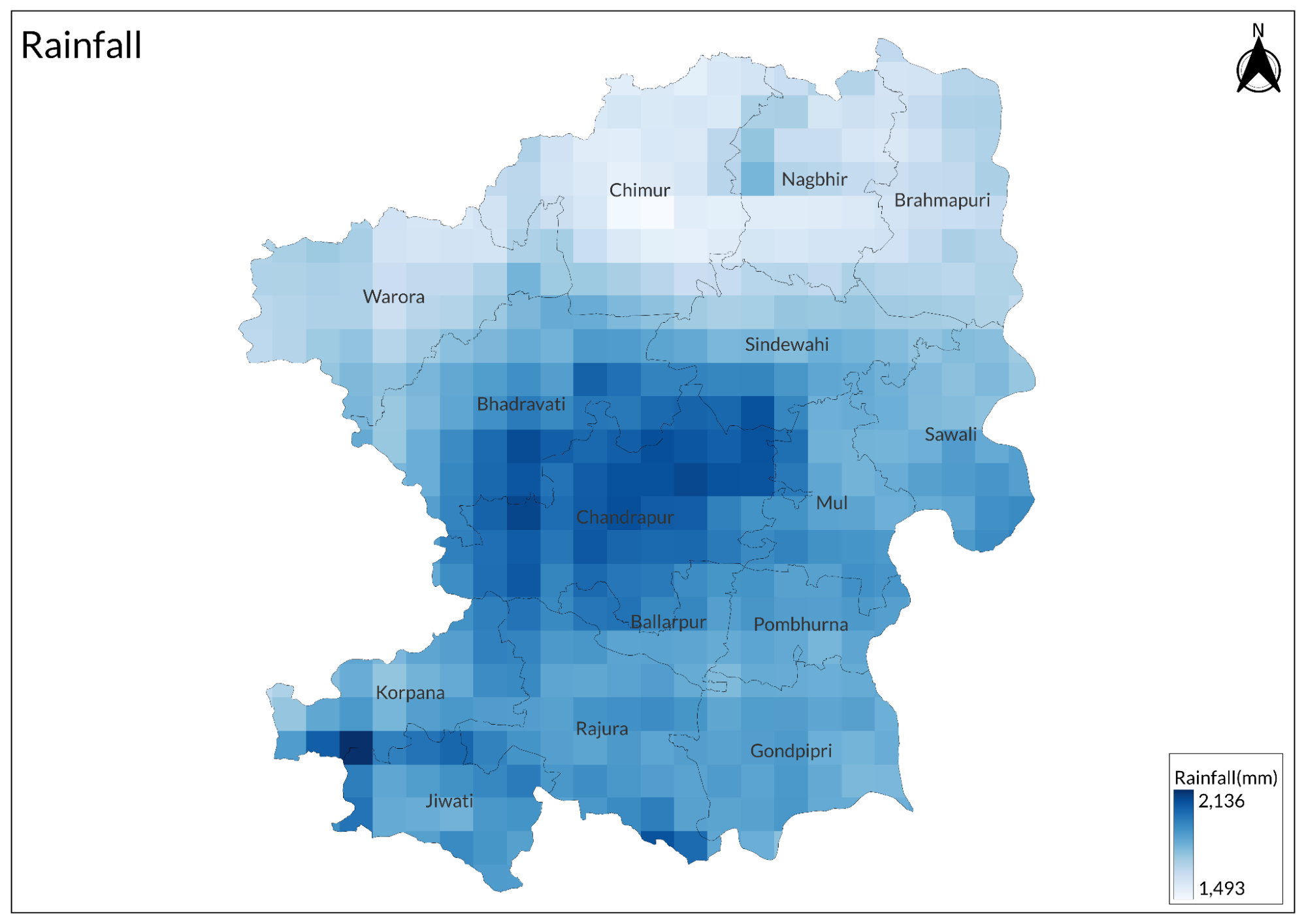
According to David Hardiman, Chandrapur, as part of the Central Provinces under British rule, was significantly affected by the large-scale famines that struck India in the late 19th century, notably the famines of 1896–97 and 1899–1900. These famines were primarily triggered by widespread drought, which led to massive crop failures, food shortages, and high mortality, especially among landless laborers and the rural poor. The immediate impact included disruption of the rural economy, unemployment, soaring food prices, and increased vulnerability among agricultural communities
In contrast, recent years have seen environmental challenges of a different nature. According to various news reports, excessive rains triggered severe flooding across the Vidarbha region, including Chandrapur, in 2013, 2020, 2023, and 2024, destroying vast areas of farmland and resulting in loss of life. These recurring environmental challenges—ranging from historical droughts and famines to modern-day unpredictable rainfall, floods, and market uncertainties have made farming in Chandrapur increasingly precarious, leaving many farmers struggling to sustain their livelihoods
Graphs
Irrigation
Cropping Metrics
Land Use and Credit
Sources
ANI. 2023. Maharashtra rains: Flood-like situation turns grim in Chandrapur.The Economic Times.https://economictimes.indiatimes.com/news/in…
David Hardiman. 1996. Usury, Dearth, and Famine in Western India. Vol. 152, no. 1. Past & Present.
Gazetteers Department. 1972. District Gazetteers, Chandrapur District. Government of Maharashtra.
ICAR. MAHARASHTRA Agriculture Contingency Plan for District: CHANDRAPUR. ICAR - CRIDA - NICRA.
NABARD. 2023-24. Potential Linked Credit Plan: Chandrapur. Maharashtra Regional Office, Pune.
PTI. 2013. 25 killed in Chandrapur floods so far. Business Standard..https://www.business-standard.com/article/pt…
PTI. 2024. Heavy rains lash Nagpur, people from low-lying areas shifted; red alert for Chandrapur. The Indian Express.https://indianexpress.com/article/cities/mum…
Shishir Arya & Mazhar Ali. 2020. Floods hit 55,000 in Vidarbha, Wainganga breaches banks. The Times of India.http://timesofindia.indiatimes.com/articlesh…
लोकमत. 2018."'सुंदर' धान पुरामुळे झाले कुरुप." लोकमत.https://www.lokmat.com/chandrapur/beautiful-…
Last updated on 6 November 2025. Help us improve the information on this page by clicking on suggest edits or writing to us.